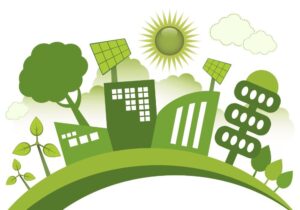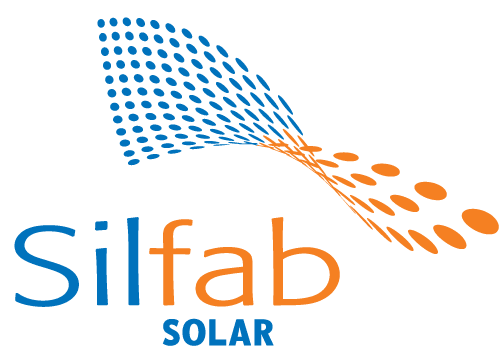Many homeowners are making the switch to solar power. If have considered making the switch for your home, you may have a few questions about whether this choice is right for you and your family. The best place to start is by learning how solar power works, deciding whether to buy or lease and what the advantages are to going solar.
Harnessing the Sun’s Energy
Every day, the sun produces an unlimited amount of sunlight. This sun’s energy can be harnessed using solar panels that are installed on your roof that collect it. This energy is then converted to usable energy via a power inverter and sent through the system for use in your home. There are different types of solar installations available for homeowners with the most common for homes being a grid-tied or a stand-alone grid-tied system. With a grid-tied system, your home uses the energy that is generated by the sun during the day. The excess energy is not used is sent back out to your electric supplier’s power grid and is usually credited on your bill. At night, your home will rely on power from the electric company. The stand-alone grid-tied system is the same, but it offers a battery backup system to keep your home powered during a storm or other problems that take down power from the electric company.Buy or Lease
You need to decide whether you want to purchase or lease your system. If you choose to lease, your upfront costs, if any, are minimal. The installation company will maintain your system and in return, they will receive the profit from the excess energy that is passed along to the electric company’s grid.You may have the option to purchase your system outright. The initial cost to purchase outright is greater, but if you make the switch by December 31, 2016, you will be eligible to recoup 30 percent of your installation costs with a federal tax credit. You may also be eligible for additional rebates and credits from your state or local government and your utility company. Owning your system outright means you will not need to
Added Advantages of Solar Power
There are many advantages to switching to solar power for your home:- It’s good for the environment. Unlike fossil fuels that pollute the air and are in limited quantity, the solar energy does not pollute the air and is completely renewable.
- Solar equipment requires little maintenance. With very few moving parts, solar panels are virtually maintenance free and can last at least 25 years.
- Helps you avoid future price increases in energy. Fossil fuel prices are very volatile and this volatility usually is tied to political and economic policies with foreign countries.

 Solar power is a renewable source of energy that can meet the electricity needs for homes and businesses across the country.
Solar power is a renewable source of energy that can meet the electricity needs for homes and businesses across the country.
 Elon Musk, the visionary founder of PayPal, Tesla, and SpaceX, made news again this spring when he unveiled a suite of solar batteries for homes, businesses, and utilities. The batteries, manufactured and sold by Tesla, are sleek, lithium-ion batteries that can capture and store up to 10 kWh of energy from renewable energy sources like wind and solar. Designed to be mounted on a wall in the garage or on an outside wall, the “Powerwall” batteries measure 1.3m by 68 cm and up to eight batteries can be “stacked” in a single. The solar batteries represent one of the first big steps towards large-scale solar storage, and Musk’s announcement garnered a lot of support and enthusiasm from the solar industry. Coming on the heels of his spring announcement, two recent reports emphasize the potential for solar + storage and how solar storage can be an energy game-changer.
The first report, released at the beginning of October by the Clean Energy Group, highlights the potential of solar+storage systems to increase the resiliency of energy generation in the U.S., especially during natural disasters like superstorm Sandy. The project investigated whether it is economical to install solar+storage technologies in multifamily affordable housing complexes in three U.S. cities.
Overall, the Clean Energy Group found that solar+storage is an economical solution for low-income housing that would also introduce a resilient energy supply with no net cost over the lifetime of a project. Solar+storage can reduce operating costs in large apartment buildings, and battery use in combination with solar systems can achieve similar operating-cost savings as those from stand-alone PV systems. As an added benefit, the solar+storage option would not require any change in resident behavior. The payback for investment in solar+storage systems can be as short as a few years; helping bring solar energy to lower-class communities that, until now, have largely been shut out of solar power opportunities.
The second report, released last week by the Climate Council, a nonprofit research group, indicates that going “off-grid” with solar+storage systems could potentially be cheaper than staying on the grid by 2018 in Australia. The report, which focused on Australia, suggests that the new solar storage technology, combined with the abundant sunlight on the continent, could make Australia the world’s largest solar market. Of course, that reality is dependent on battery prices continuing to fall and electricity remaining expensive, but the main takeaway is that off-grid, energy independent solutions are available much sooner than many have expected.
The revelation that a major industrialized nation could potentially transition half of its population to solar in the next couple of decades has been met with great excitement. Although a comparison of the solar market in Australia to the U.S. is not an apples to apples comparison, these findings allude to a looming energy revolution that utilizes solar+storage systems to take thousands of homes off the electrical grid. In addition to driving our society towards a cleaner energy economy, solar+storage systems would also help reduce the demand on the grid that is currently straining many energy utilities.
Tesla’s Powerwalls are not commercially available yet. We look forward to hearing more about when they will be released onto the market and made available for us and other Colorado solar companies to install.
The owner of
Elon Musk, the visionary founder of PayPal, Tesla, and SpaceX, made news again this spring when he unveiled a suite of solar batteries for homes, businesses, and utilities. The batteries, manufactured and sold by Tesla, are sleek, lithium-ion batteries that can capture and store up to 10 kWh of energy from renewable energy sources like wind and solar. Designed to be mounted on a wall in the garage or on an outside wall, the “Powerwall” batteries measure 1.3m by 68 cm and up to eight batteries can be “stacked” in a single. The solar batteries represent one of the first big steps towards large-scale solar storage, and Musk’s announcement garnered a lot of support and enthusiasm from the solar industry. Coming on the heels of his spring announcement, two recent reports emphasize the potential for solar + storage and how solar storage can be an energy game-changer.
The first report, released at the beginning of October by the Clean Energy Group, highlights the potential of solar+storage systems to increase the resiliency of energy generation in the U.S., especially during natural disasters like superstorm Sandy. The project investigated whether it is economical to install solar+storage technologies in multifamily affordable housing complexes in three U.S. cities.
Overall, the Clean Energy Group found that solar+storage is an economical solution for low-income housing that would also introduce a resilient energy supply with no net cost over the lifetime of a project. Solar+storage can reduce operating costs in large apartment buildings, and battery use in combination with solar systems can achieve similar operating-cost savings as those from stand-alone PV systems. As an added benefit, the solar+storage option would not require any change in resident behavior. The payback for investment in solar+storage systems can be as short as a few years; helping bring solar energy to lower-class communities that, until now, have largely been shut out of solar power opportunities.
The second report, released last week by the Climate Council, a nonprofit research group, indicates that going “off-grid” with solar+storage systems could potentially be cheaper than staying on the grid by 2018 in Australia. The report, which focused on Australia, suggests that the new solar storage technology, combined with the abundant sunlight on the continent, could make Australia the world’s largest solar market. Of course, that reality is dependent on battery prices continuing to fall and electricity remaining expensive, but the main takeaway is that off-grid, energy independent solutions are available much sooner than many have expected.
The revelation that a major industrialized nation could potentially transition half of its population to solar in the next couple of decades has been met with great excitement. Although a comparison of the solar market in Australia to the U.S. is not an apples to apples comparison, these findings allude to a looming energy revolution that utilizes solar+storage systems to take thousands of homes off the electrical grid. In addition to driving our society towards a cleaner energy economy, solar+storage systems would also help reduce the demand on the grid that is currently straining many energy utilities.
Tesla’s Powerwalls are not commercially available yet. We look forward to hearing more about when they will be released onto the market and made available for us and other Colorado solar companies to install.
The owner of 








